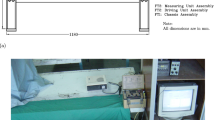Abstract
The fracture behavior of polypropylene (PP)–wollastonite–polyolefin elastomer (POE) in the mixed mode region was studied using the essential work of fracture (EWF) method. The relationship between the microstructure and the fracture parameters was analyzed. The effect of wollastonite content on the essential work of fracture and the work of plastic deformation was discussed. The energy dissipation during a double-edge-notched tension (DENT) test was calculated with the EWF method. It was found in the mixed mode region that σn increases with shortening of the ligament length region as plastic constraint effect rises and variation of the specific total work of fracture with ligament length was still reasonably linear within the mixed mode region. With increasing wollastonite content, w e (specific essential work of fracture) increases, while the βw p (specific non-essential work of fracture) decreases. The measurements of energy dissipation show that improvement in the fracture toughness of PP–wollastonite–POE is mainly due to the increase in crack propagation resistance during the necking and tearing processes after yielding, while the plastic deformation capability of the material depends mainly on the properties of fracture behavior before yielding. It is also found that the impact strength of the material decreases with increasing wollastonite content. However, the composition with high impact strength has lower specific essential energy of fracture and lower long-term fracture resistance, indicating that EWF is a better indicator of long-term fracture properties than the impact strength. DSC results show that the presence of wollastonite hinders crystallization of the PP.




















Similar content being viewed by others
References
Tjong SC, Li RKY (1997) J Vinyl Add Technol 3:89
Fu SY et al (2002) J Mater Sci Eng A 323:326
Wang K, Wu J, Ye L, Zeng H (2003) Composites A 34:1199
Zhang L, Li C, Huang R (2005) J Polym Sci B 43:1113
Broberg KB (1975) J Mech Phys Solids 23:215
Mai YW, Cotterell B (1984) Int J Frac 24:229
Mai YW, Cotterell B (1986) Int J Frac 32:105
Karger-Kocsis J (1996) Polym Eng Sci 36:203
Karger-Kocsis J (1996) Polym Bull 36:119
Karger-Kocsis J (2000) In: Williams JG, Pavan A (eds), Fracture of polymers, composites and adhesives. ESIS Publication 28. Elsevier Science, Oxford, pp 213–230
Karger-Kocsis J (2002) In: Fakirov S (ed), Handbook of thermoplastic polyesters. Wiley-VCH, Weinheim, pp 717–753
Karger-Kocsis J, Bárány T (2002) Polym Eng Sci 42:1410
Hashemi S, Xu Y (2007) J Mater Sci 42:6197. doi:10.1007/s10853-006-1157-6
Ferrer-Balas D, Maspoch ML, Mai Y-W (2002) Polymer 43:3083
Ferrer-Balas D, Maspoch ML, Martinez AB, Santana OO (2001) Polymer 42:1697
Ben Jar P-Y, Adianto R (2009) Polym Eng Sci 50:530
Kwon HJ, Ben Jar P-Y (2006) Polym Eng Sci 46:1428
Levita G, Parisi L, Mcloughlin S (1996) J Mater Sci 31:1545. doi:10.1007/BF00357863
Hashemi S (1997) J Mater Sci 32:1563. doi:10.1007/BF00351217
Maspoch ML, Santana OO, Grando J (1997) Polym Bull 39:249
Karger-Kocsis J, Ferrer-Balas D (2001) Polym Bull 46:507
Wu J, Mai Y-W (1996) Polym Eng Sci 36:2275
Bucknall CB (1978) Adv Polym Sci 27:121
Grein C, Plummer CJG, Germain Y, Kausch HH, Béguelin P (2004) Polym Eng Sci 43:223
Van Krevelen DW, Holtyzer PJ (1976) Properties of polymers, their estimation and correlation with chemical structure. Elsevier Scientific, Amsterdam, p 620
Cheng Y, Xu M (1998) Acta Polym Sin 6:671
Jiang S, Ji X, An L, Jiang B (2000) Acta Polym Sin 4:452
Acknowledgements
The authors would like to acknowledge the support by the Hunan Provincial Natural Science Foundation of China (07JJ6016).
Author information
Authors and Affiliations
Corresponding author
Rights and permissions
About this article
Cite this article
Fu, Z., Dai, W., Yu, H. et al. Effect of composition on fracture behavior of polypropylene–wollastonite–polyolefin elastomer system. J Mater Sci 46, 1272–1280 (2011). https://doi.org/10.1007/s10853-010-4911-8
Received:
Accepted:
Published:
Issue Date:
DOI: https://doi.org/10.1007/s10853-010-4911-8




